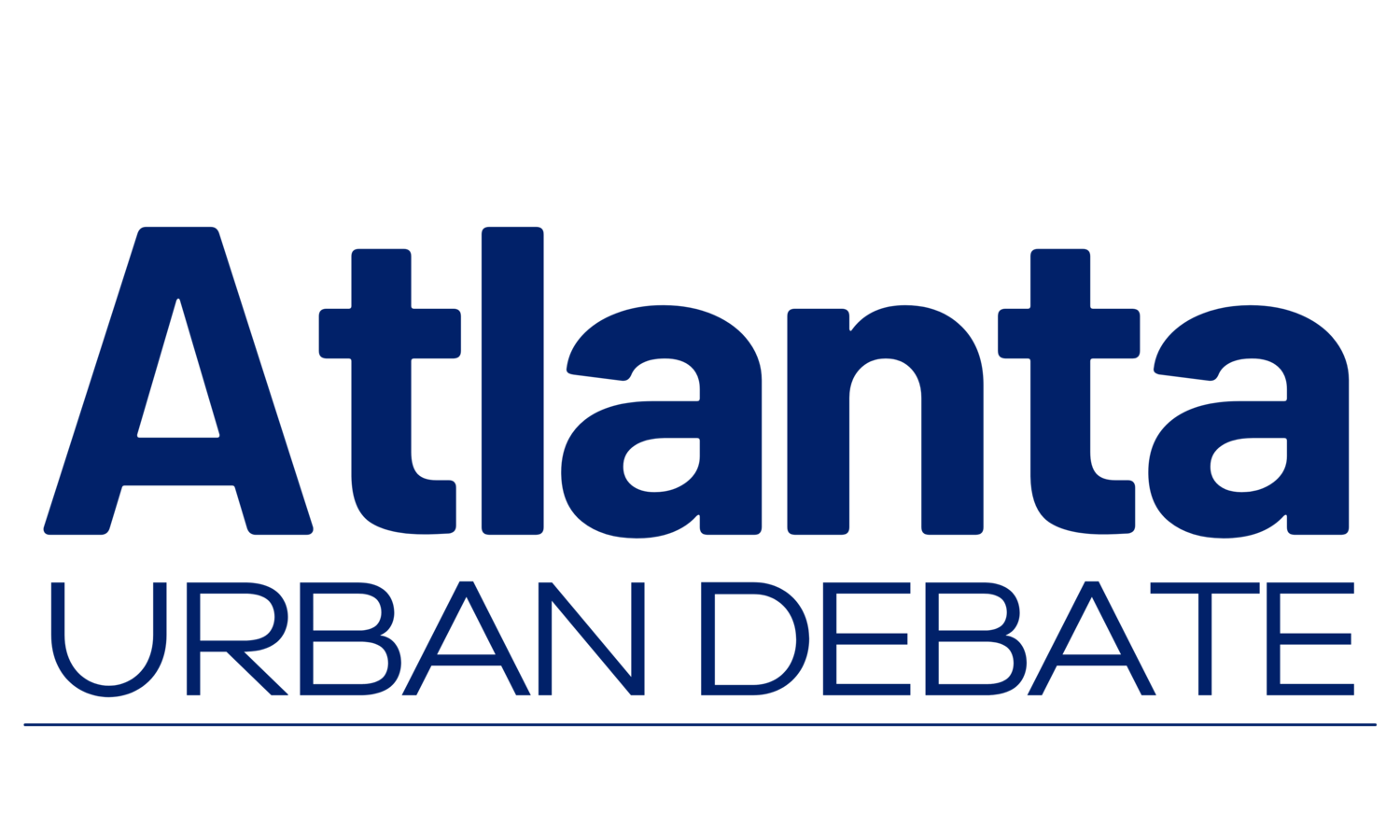The Atlanta Urban Debate League is committed to providing excellent debate education programs, services, and opportunities to diverse students, educators, and members of the community!
Middle School Novice Curriculum Guide
Being Affirmative and Negative
You’ll get to debate on both the affirmative and negative side twice during a debate tournament. That means you can’t pick your favorite side and only prepare for affirmative or negative debates, so you should know about the basics of both sides.
Affirmative
The affirmative side supports the resolution, which is a given year’s debate topic. The resolution/topic will say that the United States federal government should do something. The affirmative presents a plan, a concrete policy action that is one way the United States federal government can do whatever the resolution proposes. The affirmative presents a case to prove that the plan is a good idea, while the negative must prove that the plan is a bad idea.
A complete case has 4 parts. Harms/Advantage describes a problem/something bad that will happen (an impact) if nothing is done to stop it. Inherency will explain that there is nothing currently being done to address the problem. The plan will propose something that the United States federal government can do to change the current state of the world (status quo). Solvency provides proof that the plan will fix the problem (solvency). The affirmative case’s impact will be compared to the negative’s impact. Use the acronym HIPS or SHIP to remember the parts of an affirmative case (the order won’t always be the same, but it’s okay as long as the affirmative has all 4 parts).
Negative
The negative side’s job is to prove that the plan is a bad idea. They will make arguments that respond to the affirmative case, called on-case arguments. They’ll also read separate arguments of their own that prove the affirmative plan is a bad idea, and these are called off-case arguments.
The only type of off-case argument you’ll get in novice debate is called a disadvantage. A disadvantage is the opposite of an advantage – instead of a reason why the plan is good, it’s a reason why the plan is bad. A disadvantage is a chain of events that would happen as a result of the plan that would end with something terrible happening.
A complete disadvantage has three or four parts. Uniqueness proves that the status quo, or present day, is alright right now – but it could take a turn for the worse if something changes. The link proves that the affirmative plan would cause that change, and the awful results of that change (impact). Sometimes disadvantages come with internal links, and these are just an extra step between the link and the impact.
Example
Here’s an example affirmative case and disadvantage, using each argument’s assertion:
Resolution: Waffle House should change its menu.
Affirmative Case
Plan: Waffle House should stop selling waffles.
Inherency: Waffle House is currently selling waffles.
Harms: Waffles are unhealthy.
Solvency: Not selling waffles would boost the health of Waffle House customers.
Negative Disadvantage
Uniqueness: Waffle House is currently a profitable company.
Link: The plan stops selling waffles, which are key to Waffle House’s profit margins.
Internal Link: Profits are necessary to keep Waffle House in business.
Impact: Waffle House would shut down.
